World-class Christmas: the global guide to feasting
Simply sign up to the Life & Arts myFT Digest -- delivered directly to your inbox.
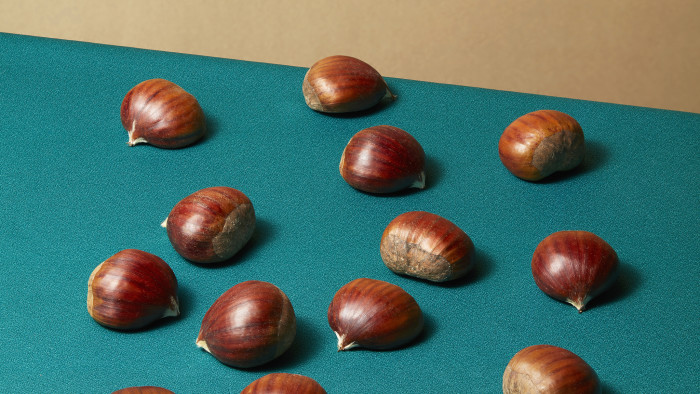
US — Leslie Hook
San Francisco correspondent
Foraging
Christmas always brings rain on the Oregon coast, particularly in the sleepy village where I spend the holidays. It’s a remote spot with ocean on one side and forest on the other, the kind of place where bears frequently rummage through the trash cans.
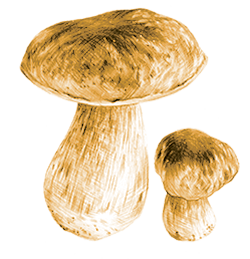
Like the bears, my family spends the winter living off the food that we store the rest of the year. Summers are spent harvesting, drying and freezing: wild blackberries and thimbleberries from the woods, peaches and cherries from a friend’s farm, or rhubarb from the garden.
In the fall we forage for mushrooms, particularly the king boletes that grow near the coastal pines, and the chanterelles found in the forest moss. During deer-hunting season, a neighbour will usually drop off some excess venison. By the time Christmas arrives, the freezers are full.
The holiday meals draw from this larder, usually supplemented by a store-bought ham and greens from the garden. The winter storms often keep everyone inside, so there’s more time to cook: the year’s harvest becomes porcini pasta, cherry pie or part of a corn chowder. It all tastes delicious, not only because we gathered it ourselves, but because we gathered it together.
Peru — Virgilio Martinez
Chef at Central, Lima
Andean potatoes
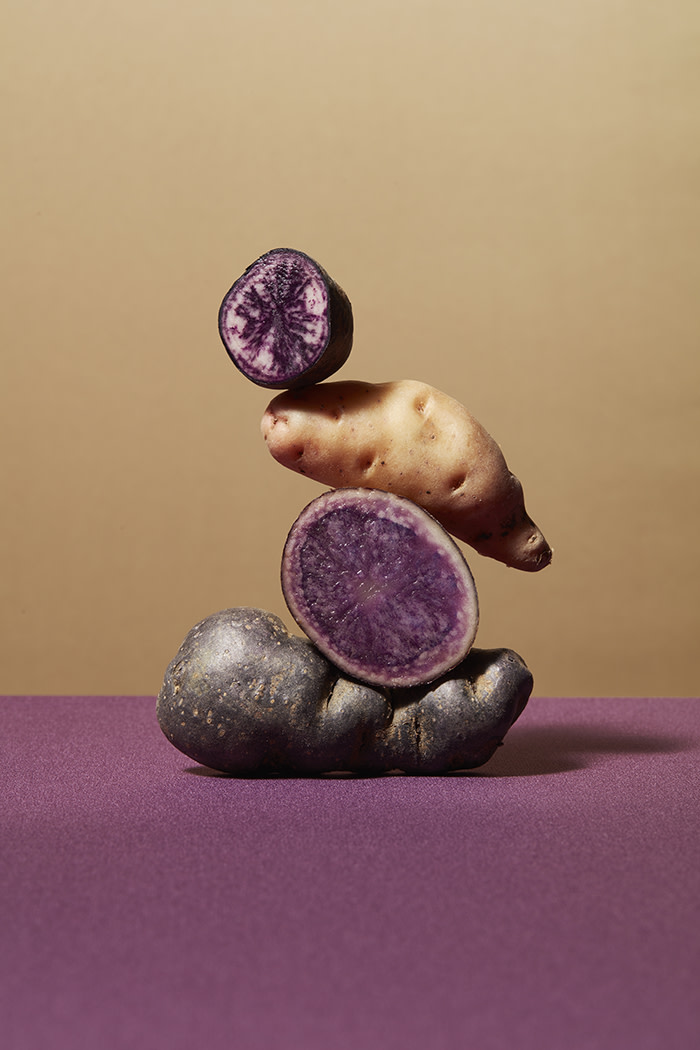
For me and my family, for Peruvians and for much of South America, Christmas is about being around a table with your loved ones — a table filled with local food. Christmas takes place after the great harvests of Andean potatoes, tubers, roots and plants. Eating them provides moments for reflection and happiness, a chance to connect with the people who grew them far away.
They are consumed with different sauces — one is huancaína (creamy and spicy), another is ocopa (nutty, creamy, spicy). Both sauces are very traditional and involve lots of Peruvian chilli peppers.
England — Ravinder Bhogal
Chef at Jikoni, Marylebone, London
Pineapple & Ham
December 1982, our annual family holiday to England. From across the Formica table I watch my father eat. For a large man, he eats delicately — his big hands make the cutlery look as if it’s been pilfered from a dolls’ house.
He slurps and sucks in his cheeks noisily. We are eating gammon, pineapple and chips at a motorway service station, en route to visit relatives in Yorkshire.
My mother is huddled in a shawl, in an almighty strop because she begrudges us anything but her own home-cooked fare. Anything a restaurant can do, she can do better — we know it, she knows it, and she knows we know it.
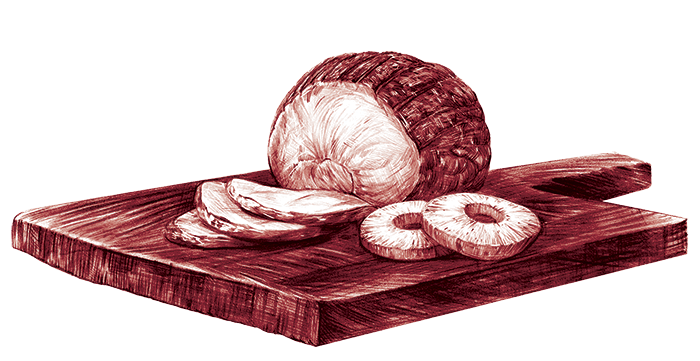
In those days, England was a wonderland of Hamleys, Fortnum & Mason biscuit tins and exotic food such as shepherd’s pie and toad-in-the-hole. Back home in Kenya, I would become dewy-eyed for my English cousins — or a crisp Yorkshire pudding. So, to sate our cravings, Friday nights became “English food nights”. My mother produced one sexed-up British staple after another: fish and chips with a ginger and chilli batter; Welsh rarebit with a slathering of home-made mango chutney; and her tremendous take on my father’s favourite of gammon and pineapple, which always graced the Christmas table — a whole ham cooked with jaggery, pineapple, tamarind and aromatic spices such as star anise and cinnamon.
Today, I long for it because it’s so evocative of happy times with my late father. Its aromatic spiciness and pineappled grandeur makes Christmas Christmas for me.
England — Alexander Gilmour
FT food and drink editor, London
Brandy butter
It’s Christmas morning, soon after breakfast, that fallow period when not much is going on. I look inside the fridge, hoping for something like a cold sausage from the day before.
And there it is — a pristine pot of supermarket brandy butter.
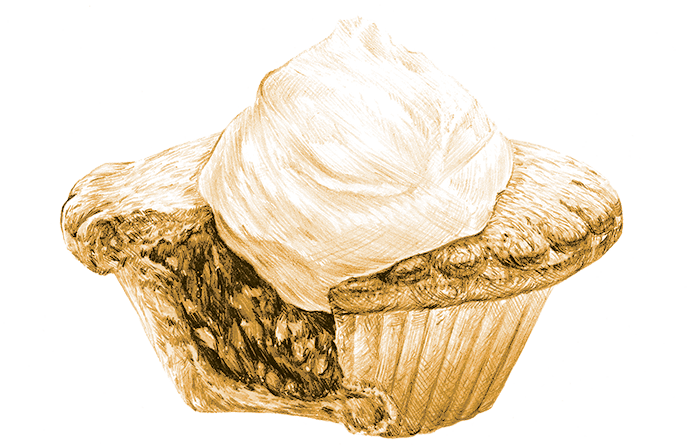
A pause. No one is looking. I peel back the metal foil. The surface of the brandy butter sparkles like freshly fallen snow.
“Don’t,” my conscience whispers. “There must be a forgotten sausage somewhere.”
Yet half a second later, my finger has made a trench across the middle. And the butter is melting on my tongue. There’s no going back — I’m addicted. I keep going — it’s crucial now to make the pot seem like it was already open and no one’s stolen anything.
Over mince pies or Christmas pudding, brandy butter will be served quite legally — but it won’t taste as good. This sublime food should neither be sanctioned socially, nor drowned out by boiled raisins.
And that first theft is only the beginning. Intermittently, I’ll find myself back at the fridge, until there’s none left. Stealing should not be an essential part of my festivities, but it is.
US — Daniel Humm
Chef at Eleven Madison Park, New York City
Beef Wellington
For me, Beef Wellington is Christmas — the sight of it, the aroma and the taste.
My mother used to make her own version for the holidays using veal, and it became a family tradition. It’s no small feat to make, with numerous steps and ingredients, but it’s incredibly rewarding. My mother would wrap the veal with prosciutto, stuff it with mushroom duxelles and truffles, and we’d roll the whole thing up in puff pastry. Aside from the intoxicating scent it produced, it also freed up my mother since much of the hard work would be done by the time dinner rolled around.
It was and still is intensely satisfying — I’m even testing out a version of our own at Eleven Madison Park.
Slovenia — Ana Ros
Chef at Hiša Franko in Kobarid
Cinnamon, cloves & star anise
I was born in the former Yugoslavia, in the days when people were not allowed to celebrate religious holidays and, therefore, created their own. Until I was a teenager, I didn’t even know the exact date of Christmas. Our big day was New Year’s Eve, with white-bearded Grandfather Frost instead of Santa Claus.

Today, the magical fragrance of spice transports me back to my childhood. Cinnamon, cloves and star anise recall the table with my family and friends, the big Christmas (or New Year) tree and presents all around.
Spain — Elena Arzak
Chef at Arzak, San Sebastián
Oysters Mondrian
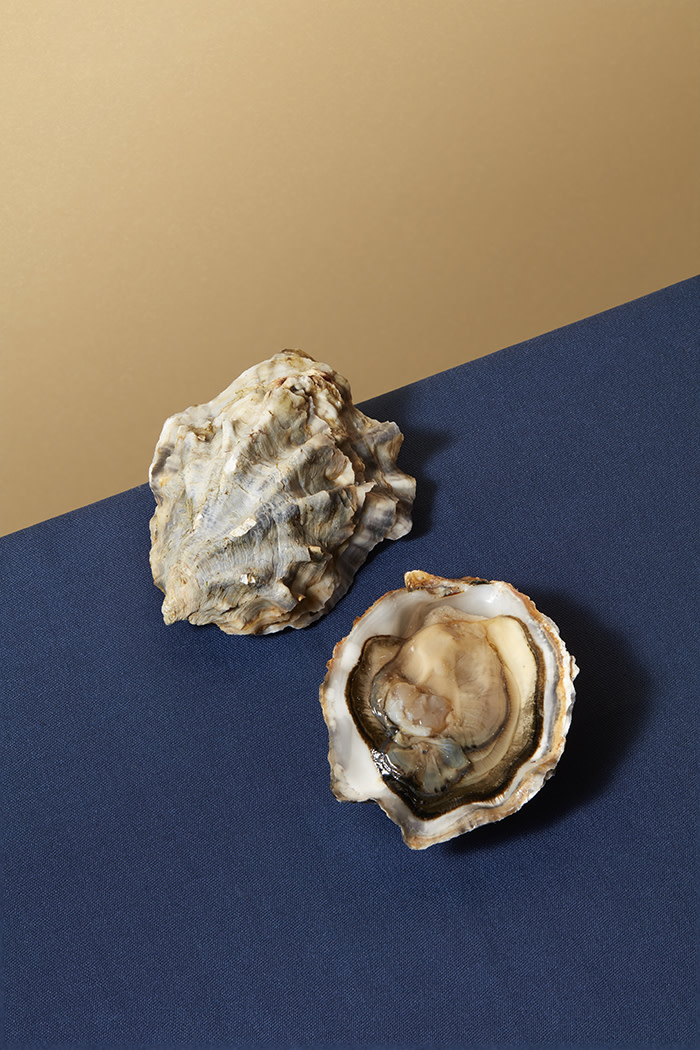
Oysters are a constant in our restaurant during their peak season and I especially like to have them at our Christmas table.
There are so many ways to prepare oysters, but we always cook them gently to create the perfect texture. “Oysters Mondrian” — fried oysters dressed lightly with truffle vinaigrette and served on a bed of green mojo sauce with crisp geometrically patterned waffles — is a playful version. My sister Marta, an art historian at the Guggenheim in Bilbao, introduced me to Mondrian’s work. His simplified vocabulary — using lines and rectangles to bypass traditional references — appealed to me and the way I think about food. It’s a very pure form of abstraction.
Japan — Leo Lewis
Tokyo correspondent
Parsnips
For far too many of Tokyo’s cafés, shops and restaurants, the small hours of November are intensely busy — tearing down the Halloween horrors and replacing them with the most Christmassy clutter, food and drink imaginable.
That’s right: Japan — a country that does not celebrate Christmas in either the religious or cultural sense, and where December 25 is an ordinary working day — now spends roughly 16 per cent of the year in a full-bore run-up to Christmas.

Over the past 10 years or so, certain traditions have become nicely entrenched in Japan. Yuletide is, by general acknowledgment, as romantic as Valentine’s Day and, in many ways, a better excuse for a date, an escalation or even a proposal. Somewhat less romantically, but many times more ingenious as a piece of marketing, KFC has managed to make itself the official Christmas dinner of Japan — a ritual now so vigorously observed that many regional branches recommend reserving your family bucket in advance.
Yet for the Lewis household, the true pleasure of Christmas in Japan lies not in what is readily available, but in what is extremely difficult to find and therefore requires ingenuity, intrigue and occasionally adventure to source. Competition contributes to the fun.
The satisfaction of laying hands on a parsnip, for example, is even greater if you know that other expats are trudging broken-hearted through a lunch without one.
The focus, obviously, is on the perfection of the classic Christmas dinner: a quest that runs into a quartet of hard-to-find sine qua nons: parsnips, Brussels sprouts, cranberry sauce and Christmas pudding, plus a longer tail of other items that are possible DIY but never quite as good as the bought version — mince pies, brandy butter, custard and crackers (of the pull-snap-paper-hat-joke variety). One year, when Nigella Lawson recommended cooking roast potatoes in goose fat, expats descended on a single shop that stocked two jars. The Lewis family, I can report, was there marginally before the hordes.
South Africa — Joseph Cotterill
Southern Africa correspondent
Braai
If a South African offers you the opportunity to join in a “smiley” this festive season, they aren’t wishing you a merrily psychedelic Christmas. Although it sounds like an acid tab, a smiley is a sheep’s head, barbecued whole, eyes and brain.

Cleaved in half to reveal both a macabre grin and smoky, succulent cheek-meat, smileys are just one facet of braai, South Africa’s culture of grilling and flaming food. Braai-ing comes into its own at the height of southern hemispheric summer — Christmastime.
Although South Africans usually aim to have a traditional Christmas meal on the day itself, December’s heat and a long holiday away from inland cities such as Johannesburg mean many will also be firing up grills outdoors.
“Barbecue” doesn’t really do justice to the concept, nor to South Africans’ spicier palates, as seen in dishes including sosaties (meat on skewers) and wors (sausage), which are part of a good braai.
The best part of a braai, though, is its sociability — best experienced in one of the shisa nyama (isiZulu for “flamed meat”) establishments that embody braai culture in South Africa’s black-majority townships. Just don’t be alarmed if something sizzling on the grill smiles back.
Singapore — André Chiang
Chef at Restaurant André
Raw cake batter
Christmas is not big in Chinese culture — yet during this period, every household bakes cakes, all kinds of cakes. Since I am not a sweet-toothed person, I rarely join in but I have noticed that my favourite part of the cake-baking season is the leftover batter at the bottom of the bowl and on the spatula.

So, last Christmas, I created a dessert called “DIY Christmas cake”. “Flour”, “butter”, “egg”, “milk” and “sugar cubes” are brought to the table. Hidden beneath these ingredients are dried fruit, almonds, cinnamon and popcorn. And then we let our guests make their own Christmas cake. Obviously, the ingredients are not the real flour, butter, egg, milk or sugar. These are:
Flour — Dehydrated buttermilk
Butter — Popcorn parfait
Sugar — Burnt marshmallow
Milk — Horchata
Egg — Treacle tart and pickled elderflower
It creates textures and flavours exactly like a Christmas cake batter (if not better!) and offers a sweet childhood memory of mine.
Australia — Pilita Clark
FT columnist
Sparkling Shiraz

“Sparkling what?” said the bloke in my local north London wine shop.
“Shiraz,” I said. “Sparkling red wine. From Australia.”
“Never heard of it,” he sniffed, with a look on his face that said, “Thank God.”
I was just off the plane from Sydney, having my first December in London and trying to find the only drink that ever makes me feel as if it is truly Christmas.
I might as well have been asking for a six-pack of camel milk.
In Australia we quaff gallons of sparkling Shiraz, especially over a summery Christmas — the bigger, bolder and more ferociously chilled the better.
Any decent bottle shop has racks of the stuff. We serve it with everything from the Christmas turkey to pizza.
Elsewhere, it is hard to find and naff. People still think of it as some sort of sweet, fizzy, cheap Lambrusco. I wish. The last time I tracked down a decent bottle of sparkling Shiraz it was a 2014 Barossa Valley number with a price tag of £106.
Admittedly, this is a drink that goes better with a day at the beach than the snow. But I live in hope it will spread and, who knows, one day it might even be easy to buy it in north London.
US — John Paul Rathbone
Latin America editor, Miami
Cuban black beans
My family’s traditional celebration — the thought of which makes me spin around the room, arranging the poinsettias, Ariel Ramirez’s elated Misa Criolla playing in the background — takes place on Christmas Eve, before midnight mass. In its fullest manifestation, there is lechón, or roast pork; yucca; avocado salad; and, of course, black beans. Of this feast, the ingredient that now carries my sense of Christmas, even more than the presents, is the black beans.
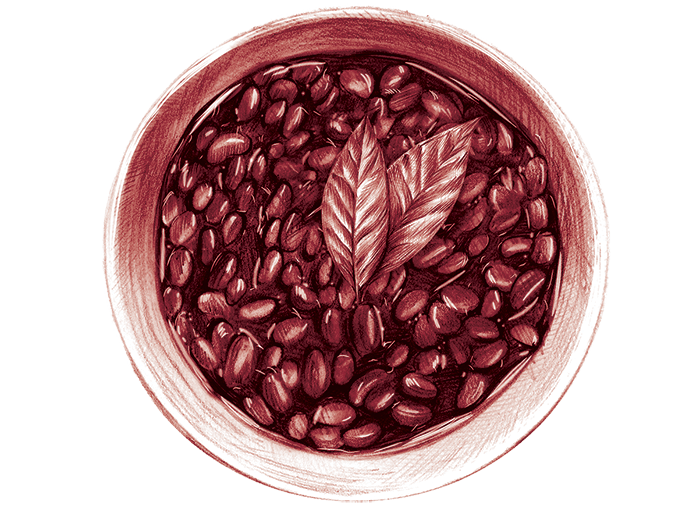
Cooking them is easy but requires a certain care, even love, and much patience. They have soaked overnight with bay leaves. In the morning, I add the sofrito, a blend of fried and chopped sweet peppers, onions, garlic and cumin. And then I stir the black beans as they simmer until they achieve a velvety texture. This process takes six hours, a process so long and implacable that it forces a welcome meditative break amid the harried pre-Christmas rush, and tips me into something approaching the coming night’s mystery. By comparison, all the rest seems optional.
An extra bonus in these divisive and austere times: in the following days, the beans are magnificent when reheated and eaten with white rice. This delightful mushy mix is traditionally called Moros y Cristianos, Moors and Christians, an ecumenical twist that always makes me smile.
France — Anne-Sylvaine Chassany
Paris bureau chief
Chestnut pulenta
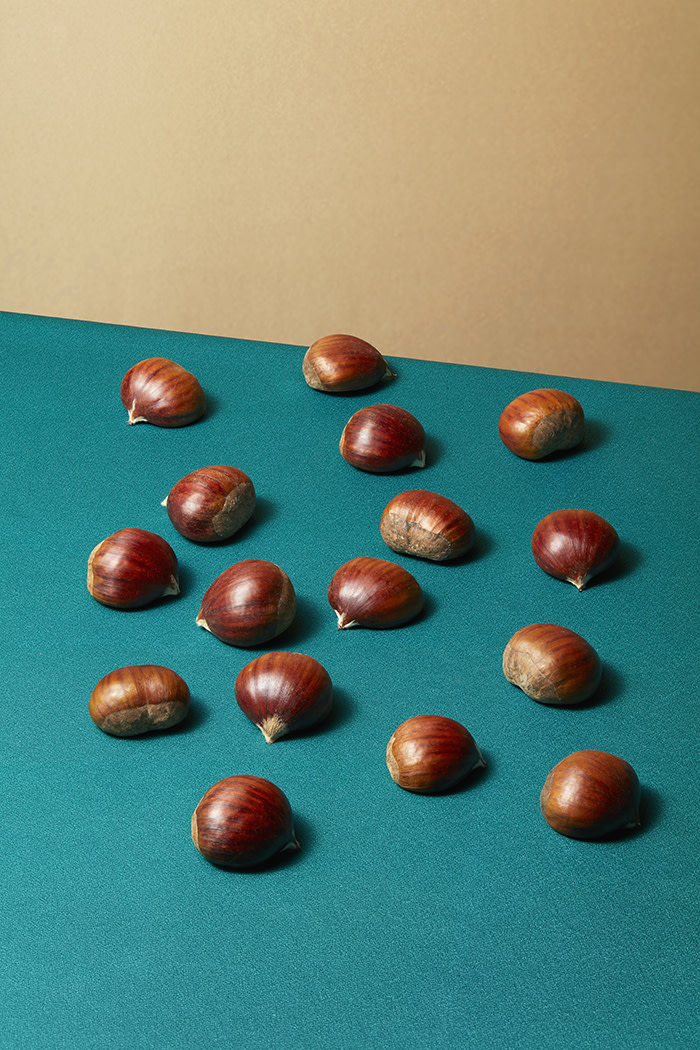
My kind of Christmas culinary bliss is made of the warm, sticky sweetness of chestnut pulenta with a touch of cold whey cheese, precipitately swallowed in the overheated apartment of my late Corsican maternal grandparents. “Why such haste?” my Paris-born father would ask. For him, a true Christmas meal has to be a series of dishes enjoyed over several hours with cutlery, not peasant food devoured with your hands.
But you have to take into account the collective effort behind the hurry. For more than an hour, my uncle would cook the pulenta — a task requiring muscles and flair. Armed with the pulendaghiu, a large wooden stick, we would take turns over the pot to stir the chestnut flour into a chocolate brown paste, after mixing it with water (and a pinch of salt). The trick was to wait for the largest, ultimate bubble that would lift the pulenta without being able to find its way out. Rushing out of the kitchen disheveled and sweating, my uncle would turn the pan over a towel dusted with chestnut flour, in a swift delivery. We would then slice the pulenta, spread brocciu (sheep whey cheese), add crumbs of grilled figatellu (smoked pork liver sausage) and be done with our feast in half an hour — feeling heroic.
Italy — Massimo Bottura
Chef at Osteria Francescana, Modena
Ravioli of cotechino & lentils
Christmas in Modena has distinctive flavours that are very far from cinnamon, gingerbread and egg yolk — tortellini in broth, cotechino with lentils and zuppa inglese.
These flavours bring me back to the kitchen of my youth, governed by my nonna Ancella and filled with laughter and busy work.
I would be hard-pressed to pass a Christmas without them. However, as you may know, I am not a traditionalist.
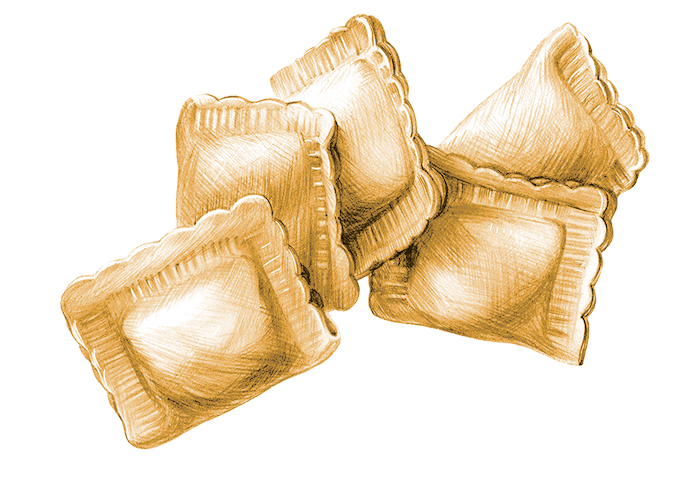
Cotechino is a 500-year-old tradition made with anything and everything left over from all the other pork preparations, including the cotica (pig skin). Today, finer cuts of pork are selected for the filling but what makes it unique is the gelatinous skin, which lends flavour and texture. Wanting to push the traditional combination of steamed cotechino and lentils forward, we decided to use cotechino as a filling for an egg pasta ravioli.
I’ve always considered ravioli a container of ideas. Here, in one bite, you get it all — texture, history, innovation, provocation and the traditionalist’s pursuit of that memorable flavour.
The first time I served this dish at Christmas, eyebrows were raised. My mother was a true traditionalist. She looked at the plate and said, “Massimo, I understand that you need to be provocative at your restaurant, but it is Christmas! Everyone will be happier if you keep it simple.”
To make a long story short, she loved them so much that they became a new tradition. Even if my mother is no longer with us, there isn’t a Christmas at our house without ravioli of cotechino and lentils.
Follow @FTMag on Twitter to find out about our latest stories first. Subscribe to FT Life on YouTube for the latest FT Weekend videos. Sign-up for our Weekend Email here
Photographs: Aaron Tilley. Food styling by Annie Nichols. Illustrations by Aistė Stancikaitė
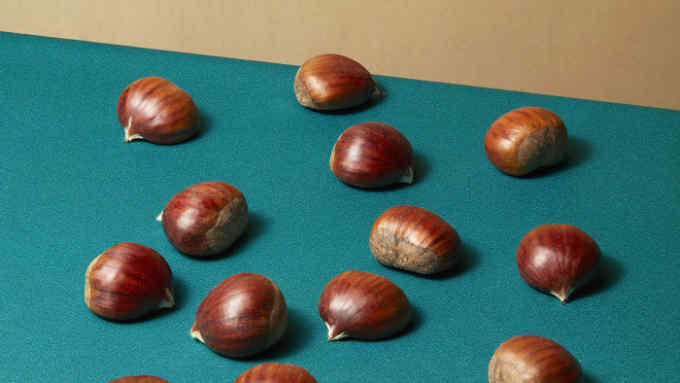
Comments